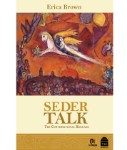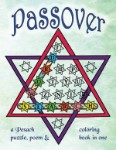Victims, Villains and Women of Valor: Women in the Era of the Biblical Judges by Shera Aranoff Tuchman

Buy this book at Amazon
The book of Judges depicts a bleak period in the history of the Israelites, characterized by a recurrent cycle of sin, servitude, repentance, and temporary redemption as the Israelites repeatedly fall into the pagan practices of their neighbors. The concluding chapters of Judges portray the Israelites at a shocking moral nadir―committing all three cardinal sins of idolatry, illicit relations, and murder. This difficult, tumultuous period forms the background for the narratives of most of the women studied in this book. The end of the era of the judges does not coincide, however, with the end of the book of Judges. The despair of its final chapters recedes before the optimistic opening chapters of 1 Samuel, in which long-suffering Chana gives birth to Samuel, who will be the last judge of Israel and who will anoint its first two kings. Under the leadership of Chana’s son, the Israelites will begin a long-lasting spiritual and moral recovery.
The many narratives explored in this book, beginning with three early narratives from the book of Joshua and ending with the story of Chana, form a rich tapestry of women who lived during the nearly four centuries between the Israelites’ entry into Canaan and the anointing of the first Israelite king. The narratives portray both women in their traditional roles and women who step outside of those roles. They include mothers, daughters, wives, widows, and concubines, pious women and ungodly ones, prophets and prostitutes, a judge and a femme fatale. Some are named; others remain nameless. Some are Israelites; others are Canaanites and Philistines. Some are charismatic figures who exert a major influence on their world; others are powerless, pitiful victims, destroyed by the men in their lives. These women can be grouped in three categories: victims, villains, and women of valor. Through the lens of ancient and contemporary traditional commentators who analyze these women’s thoughts, words, and actions, we can deepen our understanding of them and, perhaps, of ourselves.
Year first published: 2021

















